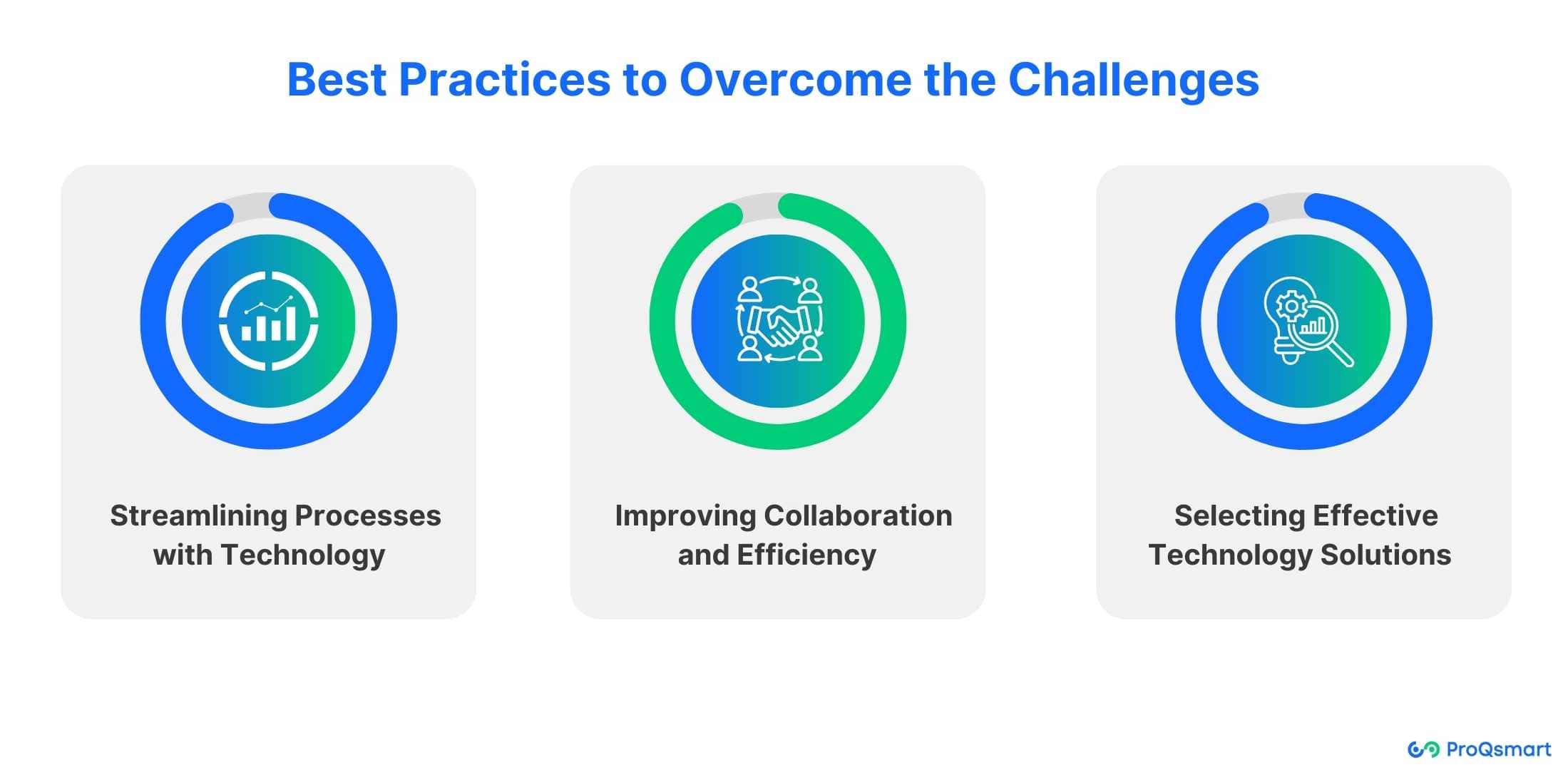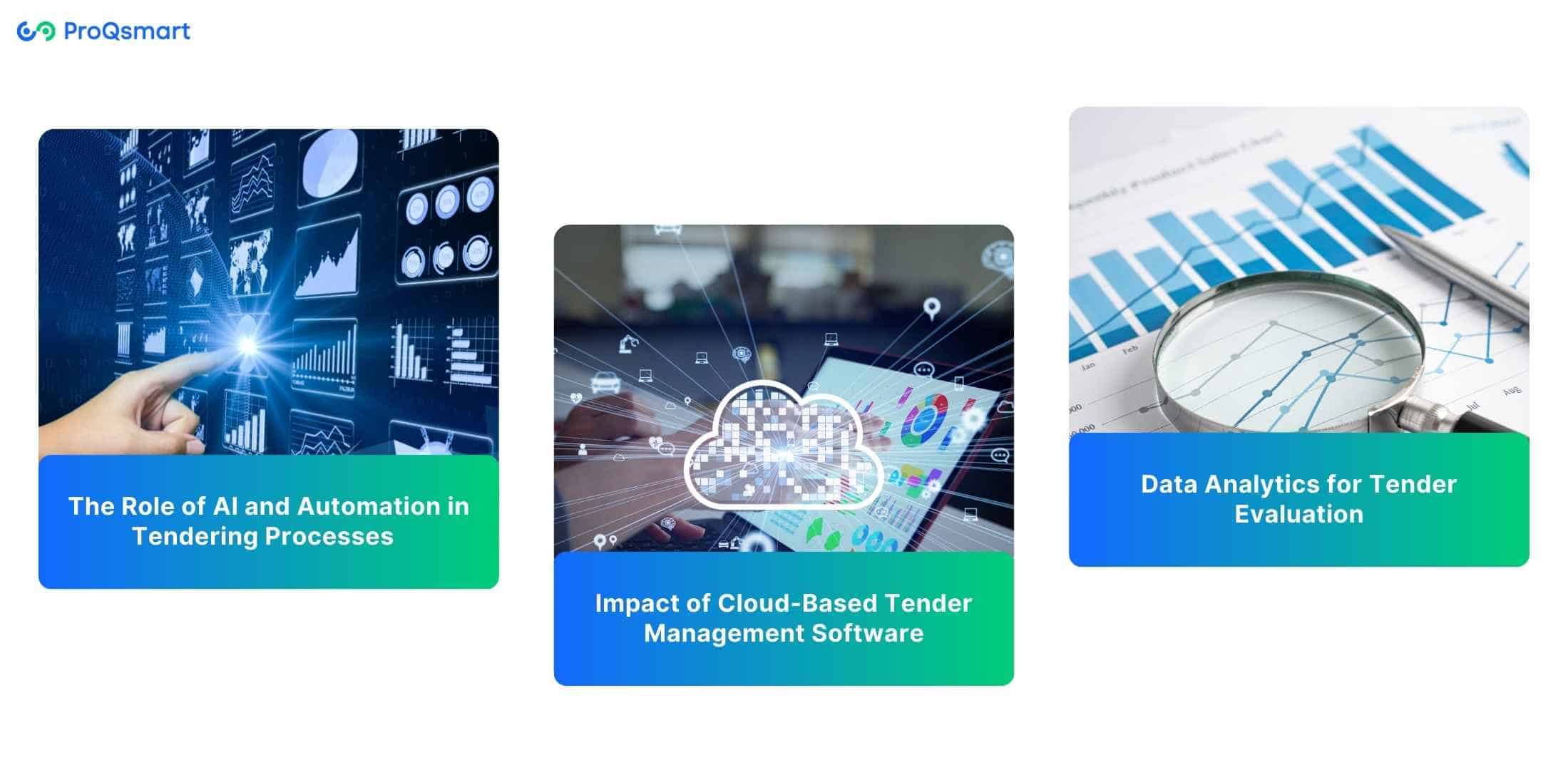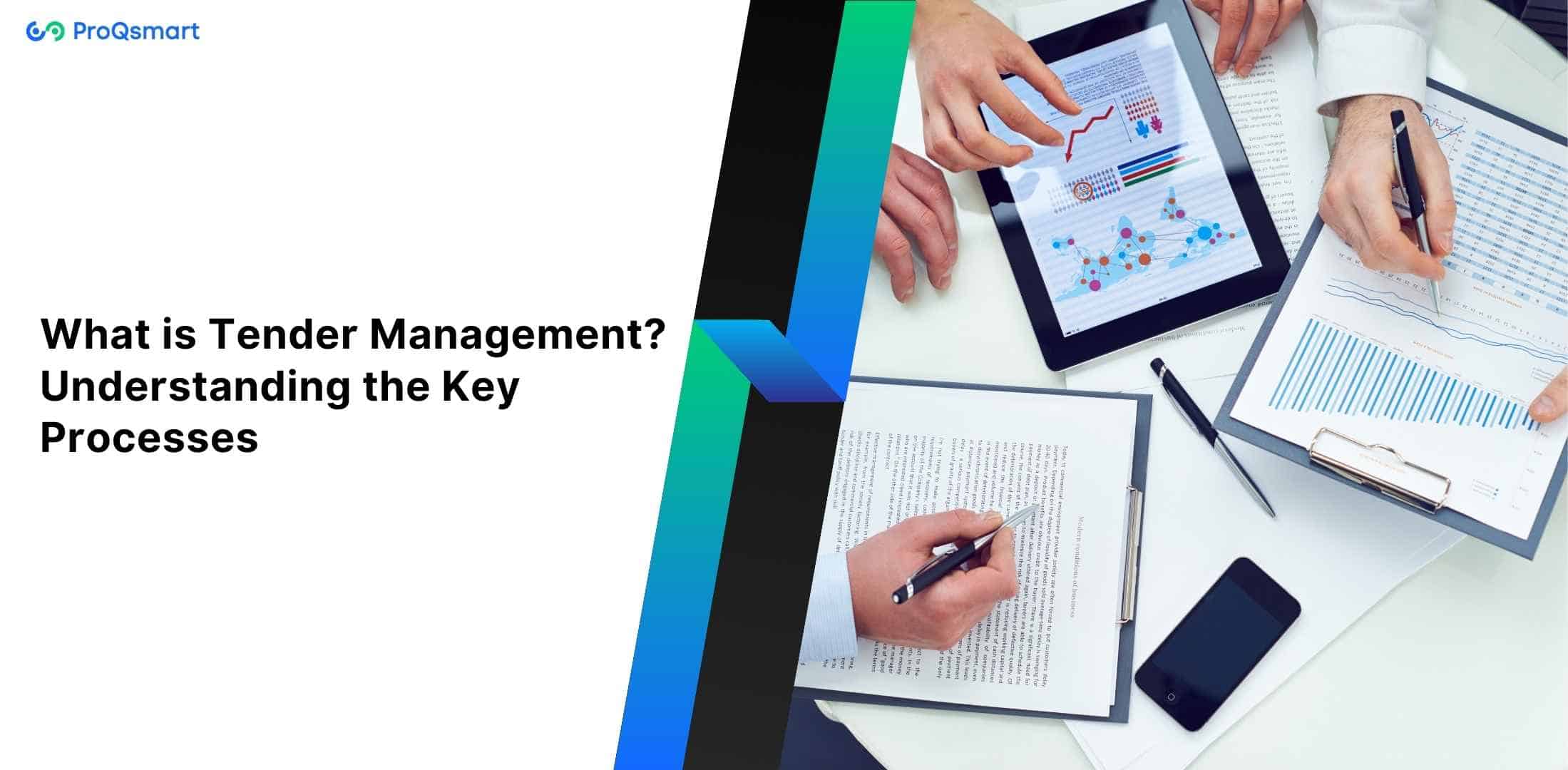Tender management is a cornerstone of procurement, ensuring competitive bidding, transparency, and value-driven outcomes. It involves managing supplier bids to meet organizational needs through a fair and open process.
Effective tender management helps procurement professionals secure the best value, build strong supplier relationships, and align with organizational goals. Beyond cost savings, it fosters public trust, accountability, and sustainable development.
Prioritizing tender management is essential for driving efficiency, innovation, and long-term success in procurement.
Key Takeaways
Understanding tender management can be crucial. It provides a structured approach to handling the tendering process, ensuring transparency and fair competition in procurement.
Smart, effective tender management is what will achieve long-term business success. It continuously optimizes procurement strategies, strengthens supplier relationships, and delivers cost-effective solutions while supporting risk management and ensuring regulatory compliance.
Key processes in tender management include preparation, issuance, submission, evaluation, and contract awarding, each requiring clear documentation and stakeholder engagement to ensure efficiency and success.
To adopt best practices, consolidate your processes and procedures, and encourage teamwork. Use data analytics to steer your decision-making and create a feedback loop to continually refine and improve your tender management processes.
Technology is at the heart of any effective modern tender management process. It simplifies workflows, increases productivity, collaboration, and provides instant updates. Tools like ProQsmart add even more value to these tender management solutions.
Continuous improvement through regular auditing and feedback integration ensures tender management practices remain efficient, effective, and aligned with organizational goals, encouraging innovation and better outcomes.
What is Tender Management?

Tender management is the ideal solution for managing the bidding process for contracts. It is vital to ensuring transparency and fairness in procurement activities. When managed poorly, it has the potential to impact business success severely and project delivery, undermining project wins and profitability.
Definition and Overview of Tender Management
Tender management is the systematic process of creating, submitting, and overseeing bids (or tenders) to secure contracts or projects. At its core, it revolves around three critical elements:
Planning
Execution
Evaluation
This process ensures that bids are not only competitive but also fully compliant with requirements, aligning seamlessly with best practices in procurement strategy.
The tender management process involves multiple stakeholders, including procurement professionals, project managers, and legal teams, who collaborate to ensure the success of each bid. A well-designed tender management system often incorporates a comprehensive and user-friendly Tender Library, which streamlines bid preparation, reduces errors, and minimizes last-minute delays.
Importance of Tender Management in Procurement
Tender management systems ensure that bids are competitive, compliant, and aligned with organizational goals. Beyond value delivery, effective tender management strategies play a critical role in risk management by continuously monitoring compliance with regulations, thereby reducing potential legal and operational risks.
Additionally, a robust tender management process directly impacts supplier selection and relationship building. It ensures that the most capable vendors are chosen, fostering trust and collaboration. By adopting tender management tools, organizations can streamline the whole bid journey, automating tasks such as document review and bid preparation.
One study found that only around 30% of companies achieved significant cost savings following the implementation of such systems. This not only boosts productivity but also minimizes errors and delays.
Role in Achieving Objectives
Aligning tender management with wider organizational goals is key. Establishing objective criteria with which to evaluate bids is crucial to ensuring that project needs are met most effectively.
Clear communication throughout the tender process is key to getting the best outcome possible. By adopting platforms like the ProQsmart, organizations can simplify complex tendering tasks, ensuring compliance and gaining a competitive edge.
Key Processes in Tender Management
Effective tender management systems are key to winning projects that will help increase overall profitability. They streamline the entire tendering process, ensuring quick, precise, and on-time bids while eliminating mistakes and hold-ups. This often complex and technical process includes six key stages in tender management strategies, all crucial to success.
1. Preparation Stage
The preparation stage is a foundational step in tender management, where clarity and precision are key. A well-defined scope of work is essential to guide prospective bidders, enabling them to develop focused and relevant submissions. To ensure no critical details are overlooked, using a checklist of requirements is highly recommended. This will help to streamline the creation of the Request for Proposal (RFP), ensuring it is comprehensive and aligned with organizational needs.
Additionally, understanding current market conditions is crucial. By analyzing market trends and dynamics, organizations can tailor their tender documents to be more competitive and relevant in today’s environment. This strategic approach increases the likelihood of attracting high-quality bids.
2. Issuance of Tender
The issuance of tender is a critical phase that involves releasing the tender to potential vendors within a well-defined timeline. A carefully crafted tender document not only attracts qualified bidders but also ensures that the submission process is clear and aligned with organizational requirements.
To maximize reach and visibility, the tender announcement should be distributed across multiple platforms. This strategic approach ensures that the opportunity reaches a wide audience, including organizations and individuals who are most likely to submit competitive bids.
3. Submission Guidelines
Precise submission guidelines are essential to ensure uniformity and clarity across all bid submissions. These guidelines should clearly outline the required format, content, and structure, enabling bidders to prepare their proposals in a consistent and organized manner. Additionally, communicating a clear timeline with all submission deadlines is crucial. This helps bidders plan effectively and stay on track throughout the process.
However, common pitfalls such as incomplete forms or missed deadlines can derail even the most promising bids. To mitigate these risks, it’s important to provide bidders with detailed instructions and reminders at key stages of the submission process.
4. Evaluation Criteria
Identifying key metrics to assess the quality and suitability of bids is a critical step in the tender management process. These metrics should align with the project’s goals and requirements, enabling a fair and objective evaluation. Implementing a structured scoring system further enhances transparency, allowing for consistent comparison and ranking of bids.
To ensure a well-rounded evaluation, it’s important to assemble a diverse evaluation team. A team with varied perspectives and expertise can provide a more comprehensive assessment of submissions, fostering fairness and reducing bias.
5. Contract Awarding Process
The contract awarding process marks the last step in choosing the winning bid after a complete review of all submissions. This stage includes finalizing the decision and preparing the needed paperwork to complete the agreement with the selected vendor. Making sure all required documents are ready helps simplify the transition and reduces possible delays or confusion.
Clarity is important during this phase to maintain trust and reliability among all bidders. Clear communication about how decisions are made and following fair practices show honesty and protect the reputation of the tender process.
Common Obstacles in Tender Management

1. Handling Multiple Tenders Simultaneously
Procurement teams often face the challenge of managing multiple tenders at the same time, each with its own set of requirements, deadlines, and complexities. Overlapping timelines can strain resources, making it difficult to prioritize tasks and maintain consistent quality across all submissions. Without proper tools or strategies, teams risk missing deadlines or submitting incomplete bids.
2. Lack of Skilled Personnel and Expertise
Effective tender management requires specialized skills, such as proposal writing, compliance expertise, and project management. However, many organizations struggle with a shortage of skilled personnel or insufficient training for their teams. This gap can lead to poorly crafted bids that fail to meet compliance standards or stand out in competitive bidding processes.
3. Ensuring Compliance and Transparency
Compliance with legal requirements and keeping transparency throughout the tender process is a major challenge, especially in highly controlled industries. Breaking the rules can result in legal risks, rejection of bids, or harm to the organization’s reputation. Ensuring openness is equally important to maintaining trust among suppliers and stakeholders.
4. Tight Deadlines and Time Constraints
Tenders often come with tight deadlines, leaving procurement teams with little time for proper preparation, review, and submission. Rushed processes can lead to mistakes, missed details, or lower-quality bids, reducing the chances of success.
5. Maintaining Supplier Engagement and Communication
Keeping suppliers engaged and informed throughout the tender process is a common challenge, particularly when dealing with a large number of bidders. Poor communication can result in misunderstandings, incomplete submissions, or disengaged suppliers, ultimately affecting the quality of bids received.
6. Balancing Cost and Quality in Bids
Procurement teams must strike a delicate balance between cost-effectiveness and high-quality submissions. Overemphasizing cost can lead to subpar bids, while focusing solely on quality may exceed budget constraints. Finding the right equilibrium is essential to achieving value-driven outcomes.
7. Adapting to Market Changes and Competition
The procurement landscape is constantly evolving, with changing market conditions, emerging technologies, and increasing competition. Staying ahead of these trends and adapting tender strategies accordingly is a persistent challenge for procurement teams.
8. Managing Data and Documentation Efficiently
Tender management involves handling large volumes of data and documentation, from RFPs and bid submissions to evaluation reports and contracts. Without efficient systems in place, teams may struggle to organize, track, and retrieve critical information, leading to delays or errors.
Best Practices to Overcome the Challenges

Leveraging data analytics can help you make better decisions, giving you a clearer picture of the market landscape and what your competitors are doing. Creative submission ideas, like unique formats for presentations, can differentiate us from the competition and spark innovation.
Establishing uniform practices is an important step in making the tender management process more efficient. Let’s work together to develop better standards and more widely adopted practices. In doing so, we can ensure that each step—from tender development to submission—is seamless and effective.
By using this method, the chances of mistakes are low, and the process is much more efficient, enabling us to spend more time creating high-quality bids. For instance, developing and using standardized templates for proposals can both save time and ensure consistency across different projects.
Encouraging teamwork and collaboration between internal and external stakeholders improves communication and increases productivity. When all are informed, miscommunications or misinterpretations are limited and the overall team can be more in sync.
Regular check-ins and shared online workspaces enhance communication and transparency. This team effort helps us address problems together and ensures we cover all aspects of the tender requirements.
Developing a feedback loop that uses the experiences gained from previous tenders is a key aspect of continuous improvement. Through understanding the successes and failures, we can improve the way we approach future tenders and make stronger submissions.
Streamlining Processes with Technology
Software solutions specifically built for tender management centralize all relevant documents and communications, establishing a single source of truth. This centralization is important in keeping things organized and accessible, which is important to efficiency.
Automatic real-time updates and notifications on a digital platform promote transparency. This helps the team respond quickly to changes and new information. Additionally, improved data management tools allow for better analysis of bid submissions and results, offering useful insights that guide smarter decisions.
Improving Collaboration and Efficiency
Finally, collaboration tools are essential in ensuring bid teams work more effectively throughout the tender process. They make it easy to share ideas and resources, ensuring everyone is involved.
Clearly defining roles and responsibilities within the team is equally important to avoid confusion and duplicated work. These platforms encourage collaborative discussions, helping teams quickly adjust and stay focused on their main objective.
Selecting Effective Technology Solutions
When examining technology options for tender management, it is important to choose software that improves the overall process. Key features to consider include automation tools for bid evaluations, tracking submission deadlines, and ensuring rule compliance. The ideal system should be strong yet easy to use, equipped with analysis tools that support data-driven decision-making.
Continuous Improvement in Tender Management
To excel in tender management, organizations must focus on continuous improvement through careful monitoring of supplier performance alongside robust contract management practices.
Monitoring Supplier Performance Effectively
Regularly assessing supplier performance ensures compliance with contract terms while identifying opportunities for improvement. This involves tracking delivery schedules, quality of goods or services provided, and responsiveness to feedback. However, establishing Key Performance Indicators (KPIs) tailored to specific contracts allows for effective performance evaluation.
Implementing Audit Trails and Risk Management Protocols
Maintaining comprehensive audit trails is vital in effective tender management practices. Documenting each phase of the tender process creates a clear record of actions taken. Additionally, integrating strict risk management protocols is essential:
Identifying Risks: Systematically identifying potential risks at the outset of the tender process.
Developing Mitigation Strategies: Creating strategies for each identified risk to prevent or minimize impact.
Future Trends in Tender Management

The landscape of tender management is rapidly evolving, driven by advancements in technology and changing market demands. Here are some key trends shaping the future of this field:
The Role of AI and Automation in Tendering Processes
AI-Driven Tender Optimization: The integration of AI-powered tools, such as ProQsmart, will automate essential tasks like document review, compliance checks, and tender preparation. This automation not only enhances efficiency but also improves accuracy in the tendering process.
Predictive Analytics: Leveraging historical data, AI will help organizations predict outcomes and identify optimal strategies for winning tenders. This predictive capability allows for more informed decision-making and targeted bidding efforts.
Impact of Cloud-Based Tender Management Software
Centralized Solutions: Cloud-based software enables teams to manage and collaborate on tenders from any location, significantly improving accessibility and operational efficiency. This flexibility is essential in today’s fast-paced business environment.
Enhanced Security: Cloud platforms come equipped with robust security features that protect sensitive tender data. This ensures compliance with regulations and reduces the risk of data breaches, fostering trust among stakeholders.
Data Analytics for Tender Evaluation
Data-Driven Decisions: Advanced analytics tools will empower businesses to evaluate tenders effectively by analyzing trends, competitor performance, and success rates. This data-driven approach leads to more strategic decisions.
Real-Time Evaluation: The use of analytics will facilitate quicker, data-backed decision-making processes, streamlining the tender evaluation workflow. This immediacy allows organizations to respond rapidly to opportunities and challenges.
Conclusion
Tender management is a crucial pillar of procurement that, when executed effectively, can lead to significant cost savings and enhanced supplier relationships. Embracing innovative strategies and cutting-edge technology is essential for staying ahead in the competitive bidding landscape. The journey doesn’t end with implementation; it requires ongoing iteration and education to remain at the forefront of industry advancements.
By leveraging technology tools, organizations can improve efficiency and ensure compliance throughout the tendering process. For instance, ProQsmart offers a comprehensive e-tendering solution that streamlines bidding, manages documents, and automates workflows, making it easier for teams to collaborate and maintain transparency.
By continually challenging existing conventions and embracing new concepts, businesses set the stage for unparalleled success in their procurement strategies. Are you ready to transform your tender management approach? Start now with ProQsmart and witness the tangible benefits that come from a modernized procurement process!





